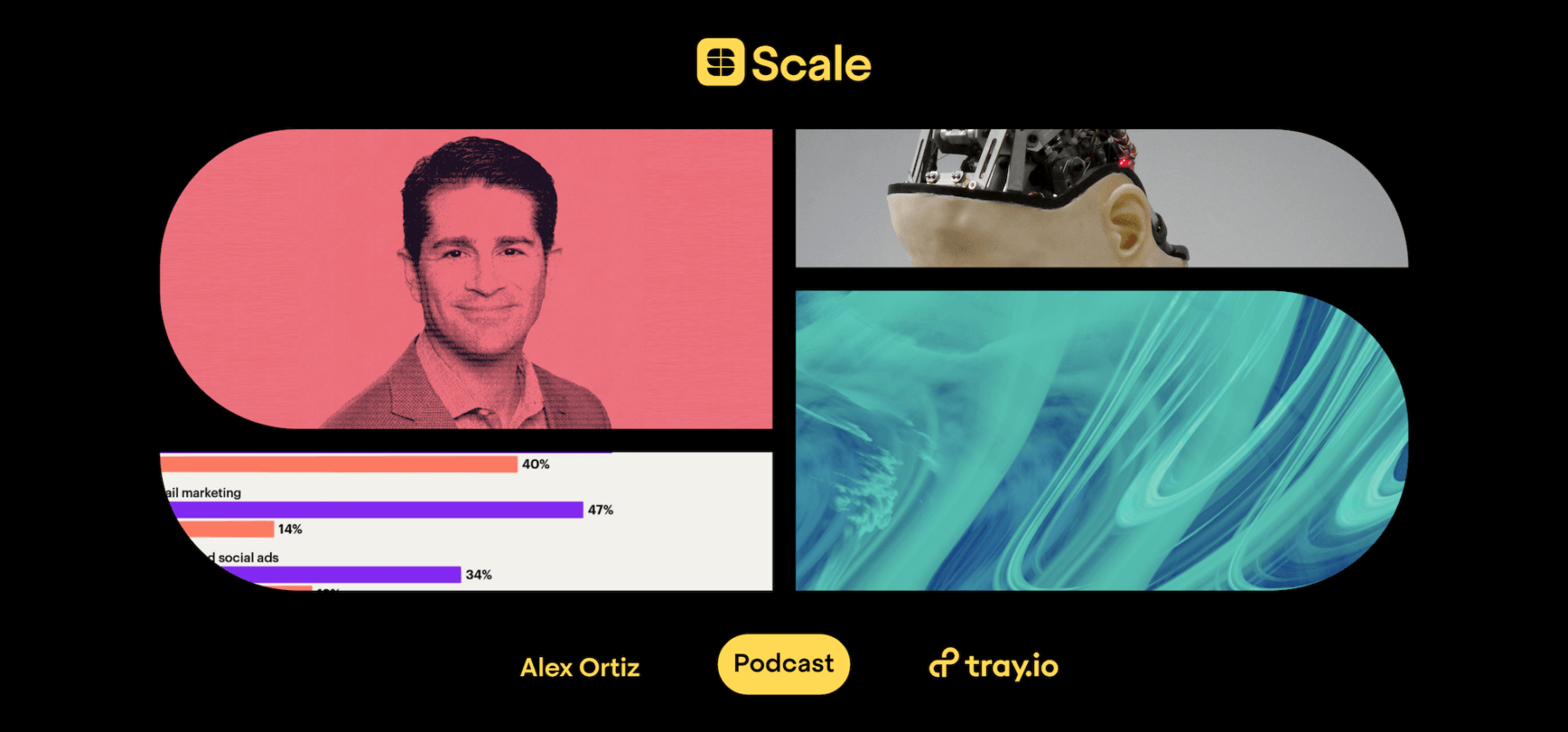
Tray.io’s VP of Marketing Alex Ortiz on embracing the era of automation
On this week's podcast we get to grips with what automation means for the future of work and in particular, for the marketing world.
For many, the very mention of the word “automation” can trigger fears of lost jobs (at best) or an imminent robot takeover (at worst). Thankfully, no such Armageddon is on the horizon
Instead, we’re entering an exciting new moment in marketing where AI tools not only have the ability to free up humans to do the best work of their careers, they are helping companies reach their customers in a highly personal and engaging way.
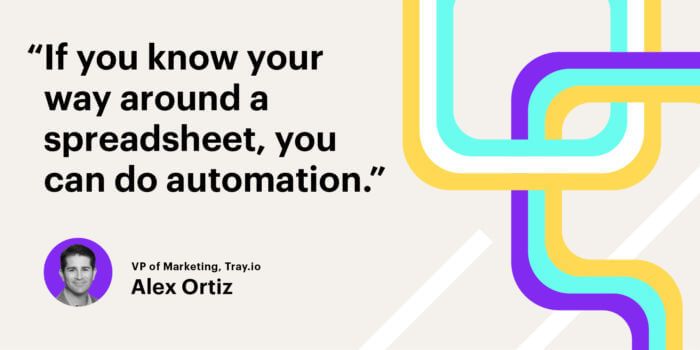
In the omnichannel era we’re now living in, automation is the hook that helps crochet all the threads together.
This week, Brian Kotlyar, Intercom’s Senior Director of Demand Generation, speaks with Alex Ortiz, VP of Marketing at Tray.io about why we shouldn’t fear automation in the workplace. Alex has deep experience building market-leading companies, having been a major player at QuanticMind (where he helped grow ARR by 800%) and Salesforce, where he was part of a team that doubled revenue from $1.5 billion to $3 billion.
These days, he helms the marketing team at Tray.io, the leading general automation platform designed to help professionals integrate and automate their enterprise stacks. During his tenure, he’s helped achieve 4.5x growth in the company’s annual recurring revenue.
This is the final episode of season two of Scale, our series exploring the minds of brilliant leaders and thinkers from the likes of Google, Yelp, and Udemy: folks who have each successfully propelled their company to a new stage of growth.
Listen to the full episode above or check out Alex’s takeaways below.
If you enjoy the conversation and don’t want to miss the rest of the series, just hit subscribe on iTunes, stream on Spotify, Stitcher, or grab the RSS feed in your player of choice.
The shift to a new tech stack
As the SaaS industry enters a new decade, marketing technology continues to command a huge chunk of companies’ expenditures – more than a quarter of the total budget, according to Gartner.
With great spending comes great responsibility (as they say), and it’s normal for marketing leaders to always be on the lookout for the latest addition to their technology stack. Typically, this includes tools that will improve internal collaboration, measure their impact, and reach customers in new ways. It’s essential in marketing today that you stay abreast of the latest developments in a rapidly evolving landscape.
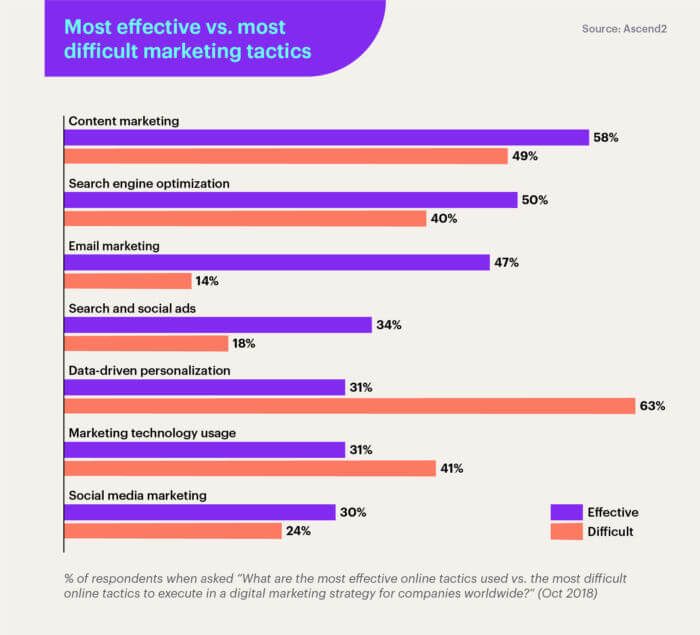
Alex explains why marketers are building a new, centralized tech stack:
“There are so many channels, and each one requires technology to manage it effectively if you’re a marketer. Here we are in 2020 with much better data collection than we’ve ever had. There needs to be a new way to organize that behavior data (that’s largely click data), and marry it together with the qualitative data that might be sitting in your CRM or other tools.
“And so the reason that companies are shifting to the new stack is that CRMs weren’t designed to handle all the click data that’s coming at them. Sure, they have fields, and they can store it, but it’s really not the optimal place. And if you think about AWS, if you think about the rise of cloud data warehousing, that is a big technology change and a big game changer for a lot of companies.
“So we’ve seen companies who have basically re-centralized their data into cloud data warehouses, and that is the source of truth. It’s a system of record, and they’re marrying together both the unstructured data and the structured data to do really interesting marketing.”
We also recently wrote about the marketing tech trends we’re eyeballing in 2020:
- Marketers are looking for all-in-one solutions instead of siloed tools that require a lot of switching back and forth.
- They’re also keen to optimize their stack by turning to integrations that work seamlessly together.
- Market leaders like Tray.io are all-in on personalization and the massive potential to serve customers more intimately at scale.
Scaling a personalized buyer experience with automation
Would you choose to lose half your customers if it were in your power to keep them? It’s an admittedly easy question to answer but research shows that 52% of online customers say they’ll switch to a different brand if you don’t offer a one-to-one marketing experience tailored to their needs.
There’s just one problem: while the notion of a deeply customized experience has been the dream of marketers for decades, effectively lassoing the data required has been extremely difficult because of the level of organization needed. True personalization at scale is a step above simply personalizing emails or sprinkling user-specific data throughout your website.
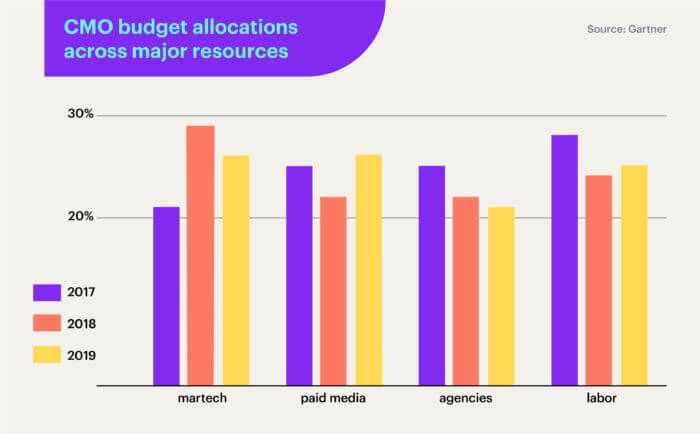
It comes down to omnichannel management – something Tray.io specializes in. The challenge lies in scaling across multiple outlets, making sense of behavioral data, and linking it all together in a way that makes customers feel known instead of targeted.
Here’s how Alex and his team are tackling the issue for both marketing and sales:
“Think about each role within marketing, and there are some pretty interesting use cases to talk about. If you’re a performance marketer, we’ve seen some really cool workflows that aggregate all the different performance data from Google AdWords, Facebook, LinkedIn – all the acquisition channels – and brings that into a BI [business intelligence] dashboard.
With Intercom [for sales], we’ve been able to stitch together an NLP [natural language processor]. So we basically built a chatbot using Intercom, Tray and an NLP that helps us respond a lot quicker to web chats than if it was just our SDR team.
Our SDR teams are on calls and meetings, and unfortunately like many others, our response time wasn’t great. We’re both trying to increase the responsiveness of what we’re doing in web chat and add a lot of context. So that custom chatbot is doing really well for us and it’s really improving both our responsiveness and getting people answers that they need in an automated way. And that’s pretty crazy, right? We’re automating the engagement of folks and that’s really helping us to scale the business.”
Automating software, not automating people
When automation is done correctly, it frees up talented teams to reach their full potential and create new opportunities. It’s never a case of automating people out of their jobs, as Alex explained.
Here’s a case in point: as a product marketer by training, Alex spoke about how he often struggled to stay on top of the competition. Then, one of the guys on his team built a proactive automation that analyzed call transcripts for keywords that might indicate their prospective buyer was considering making their purchase elsewhere.
Suddenly, Alex had gained access to a quantitative look at who might poach his leads, which in turn now allows him to prioritize his competitive intelligence and messaging. Instead of being automated out of his job, he’s now leveraging machine learning to help him do his job better and increasing his value to the company.
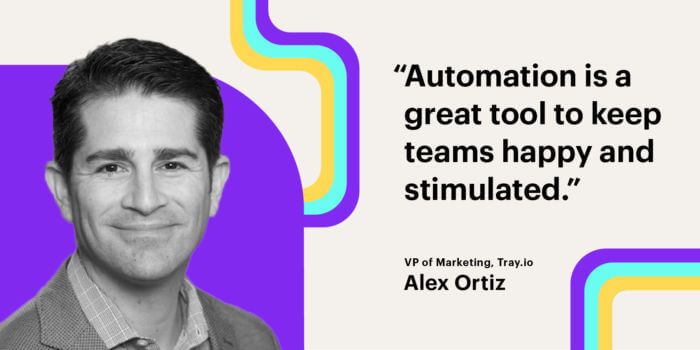
Alex contends that anyone can do the same. Today you don’t have to have a super technical background to explore automation in marketing. Tray.io, for example, offers quick-start templates that allow people to create these solutions themselves.
Here’s Alex on how automation enhances our everyday work:
“Automation software doesn’t automate people out of a job. It automates software. We’re all using so much software that we’re tripping over the software. Automate away the boring stuff or the things that are tripping us up in our work. We talk to a lot of prospects, and it never actually comes up. People don’t ever say, “Oh gosh, is Jim going to lose this job if I automate this?” Everyone knows Jim didn’t go to college to be a spreadsheet monkey copying and pasting stuff. That’s actually more detrimental to keeping Jim.
“Fresh out of school, I was doing some monkey work and I was like: “I can’t believe I went to college to copy and paste data from point A to point B. This is ridiculous.” I wanted to leave that job. If you’re a VP and you’re thinking about how to empower your team and keep them happy, automation is a great tool to keep them happy and stimulated, because they’re no longer wading through the very tedious and manual stuff.
“I see that people get promoted when they bring in automation. We’ve had many cases where someone automates a few things at a company, someone else notices say, “Oh my gosh, can you help me over in my customer success team?” Then before you know it, they actually become indispensable because they have a capability that is new to companies. So I view automation as a career enhancer and certainly that’s what we’re seeing in our customer base.”
This post is part of Scale, a place where we explore how businesses are driving growth through customer relationships. Scale offers advice and guidance from support, marketing, and sales leaders who are charting new paths for their customers – and their companies.









